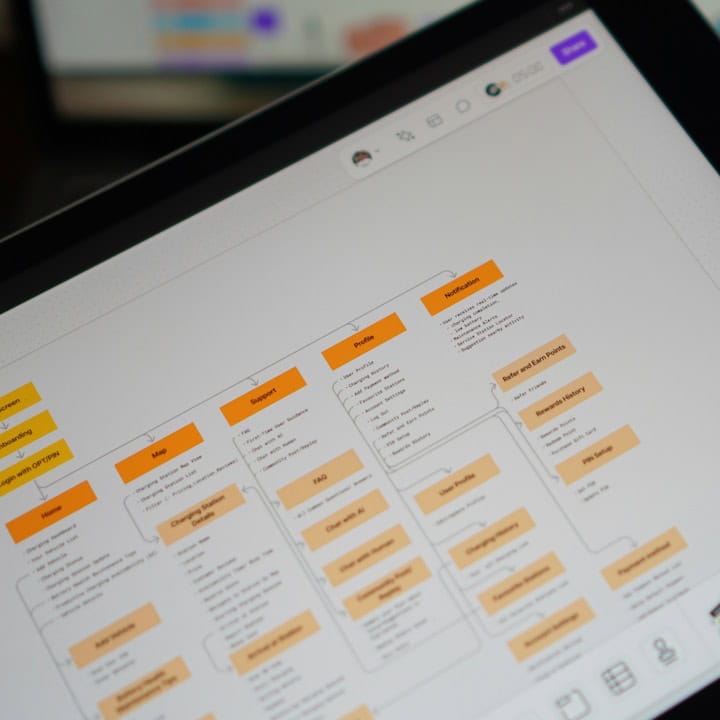
Growing businesses invest heavily in content creation, yet most fail to unlock its revenue potential through smart internal linking.
Implementing a strategic approach to internal linking can lead to significant business outcomes, with pages using targeted links found to generate up to five times more traffic than those without. But only when you implement it as purposeful business infrastructure rather than random SEO tactics.
Without properly linking content, your valuable business insights remain isolated, unable to guide customers through their buying journey or show them the depth of expertise that justifies your premium positioning.
Key Takeaways
- Strategic internal linking can increase conversions and search visibility by turning isolated posts into connected business assets.
- Search engines (and LLMs) often favour websites with strong internal link structures that show depth and expertise.
- Well-structured “content silos” create competitive moats that become stronger over time and help protect your business from its competitors.
- Regular internal link audits prevent broken links, cannibalisation, and lost opportunities for revenue growth.
Why Internal Links Matter More Than Ever for Business Growth

Many business leaders question whether traditional linking approaches remain relevant as AI reshapes how people find information. Recent studies show that AI platforms actually favour higher-ranking content in their responses, making search visibility more critical than ever for business discovery.
Research shows that 75% of Google AI citations come from pages ranking in the top 12 positions[1], with nearly 80% of AI results containing links to one or more of the top 3 ranking results[2]. This means when you build strong internal linking structures, you gain a significant advantage in AI-driven discovery channels.
Your internal linking approach directly impacts whether potential customers discover your expertise – or discover your competitors instead. Poor content connections leave revenue on the table by failing to demonstrate the expertise that search engines and AI platforms reward.
Creating Revenue Impact Through Smart Content Connections
Internal linking creates measurable business outcomes by guiding visitors through structured expertise demonstration. Pages with 40-44 internal links see four times more Google traffic than pages with 0-4 internal links, according to a comprehensive analysis of 23 million internal links across 1,800 websites.[3]
This improvement occurs because proper internal linking creates what marketing specialists call “expertise building” – where each content piece builds credibility that makes subsequent offers more compelling. When visitors engage with 3-4 connected pieces of expertise-demonstrating content, they show significantly higher conversion patterns than single-page visitors.
For growing businesses, this structured approach means you can make every piece of content a potential revenue driver rather than leaving isolated information that fails to progress customers towards purchase decisions.
Building Competitive Advantages Through Content Networks
Well-planned content networks supported by internal linking create competitive advantages that compound over time. When your content structure demonstrates comprehensive expertise across business solution areas, competitors cannot easily replicate the authority and trust signals you’ve built.
Internal linking between content areas signals to search engines and potential customers alike that your business offers comprehensive solutions rather than scattered services. This thorough positioning supports premium pricing whilst reducing price-based competition.
Well-structured content networks connected through thoughtful internal linking create what business experts call “authority advantages” – sustainable competitive benefits that become stronger as content libraries expand and link relationships mature.
Want to build your own authority advantages?
Our digital marketing team specialises in creating content architectures that establish lasting competitive positioning for growing businesses

Case Study: How Smart Internal Linking Helped Expat Living Recover Traffic
Expat Living, a Singapore-based media company known for its magazine and website supporting expats, faced a collapse in search traffic that threatened its business. The problem wasn’t just a drop in numbers – it was that broken and scattered internal links made the site confusing for users, with Google picking up on this.
Chillybin’s audit uncovered these issues and revealed that much of the site’s content sat in isolation, preventing users from exploring the full range of resources and limiting the site’s ability to rank competitively.
The solution was to rebuild with intent. We organised content around key challenges expats face in Singapore, then built clear internal links to guide readers from one article to the next. This structure helped demonstrate authority to search engines while creating a smoother experience for readers.
The results came quickly. Search rankings rebounded, traffic stabilised, and Expat Living began reaching and engaging more expats than ever before.
Read the complete Expat Living transformation.
Building Your Smart Internal Linking Framework
Effective internal linking requires methodical approaches that align content structure with business objectives, creating revenue-generating pathways rather than random connections.

Developing Content Hubs for Revenue Generation
Content hubs form the foundation of smart internal linking by organising your business expertise into clear themes that address specific customer challenges. Each hub should focus on problems your business solves, with supporting content that demonstrates progressive expertise depth.
For growing businesses, you can align content hubs with service categories or industry verticals, allowing organised expertise demonstration that supports premium positioning. Each hub needs cornerstone content that comprehensively addresses core topics, supported by specific case studies, implementation guides, and industry insights.
Creating cornerstone content requires strong foundational writing skills. If you’re starting your content journey, begin with our blog writing guide to ensure your main content meets professional standards.
Thoughtful hub development considers buyer journey stages, ensuring each expertise area includes awareness content that attracts visitors, consideration resources that build credibility, and decision-stage materials that facilitate conversion.
Creating Content Clusters That Drive Conversion
Content clusters prevent expertise dilution by maintaining clear topical boundaries whilst creating opportunities for deep internal linking within specific business areas. When you structure clusters well, you build topical authority that search engines reward while demonstrating the expertise that customers value.
Each content cluster should include multiple content types – educational pieces, case studies, implementation resources, and industry insights – connected through internal links that create natural progression pathways for visitor engagement.
This cluster structure enables organised nurturing by ensuring visitors who discover one piece of expertise can easily access related insights that build cumulative credibility and trust. You replace random content discovery with deliberate expertise demonstration.
Designing Internal Link Architecture for Business Objectives
Smart internal linking serves specific business functions beyond SEO improvement. You can make each internal link either progress visitors through buying journeys, demonstrate additional expertise areas, or guide users towards conversion opportunities.
Hub-and-spoke architectures work particularly well for business content, where comprehensive main pages serve as central resources linking to specific case studies, implementation guides, and related expertise areas. This structure makes it easy for potential customers to explore depth whilst maintaining clear navigation pathways.
When you add contextual internal linking within content, you create natural progression opportunities without disrupting reading flow. These connections should anticipate customer questions and guide them towards logical next steps in their evaluation process.
Advanced Internal Linking Approaches for Competitive Advantage
Sophisticated internal linking approaches create business advantages that compound over time whilst building sustainable competitive benefits through content structure.

Mastering Topic Networks for Authority Building
Topic networks involve creating comprehensive content webs around specific business themes, with purposeful internal linking that demonstrates organised expertise depth. This approach builds search engine authority whilst creating compelling customer experiences that showcase comprehensive business capabilities.
You can develop each topic network with cornerstone content that comprehensively addresses core challenges, supported by specific implementation examples, case studies, and industry insights connected through deliberate internal linking patterns.
Topic networks work best when supported by external authority signals. These proven link-building approaches help establish the external credibility that amplifies your internal content structure.
Advanced networking considers semantic relationships between topics, creating internal linking pathways that feel natural to visitors whilst methodically demonstrating business expertise breadth and depth.
Using Link Text for Business Positioning
Internal link text should reinforce your business positioning whilst clearly communicating the value visitors will discover on destination pages. Smart link text selection supports keyword targeting whilst creating clear expectations about linked content.
For business content, link text should emphasise outcomes and benefits rather than generic descriptions. “Revenue growth implementation methods” positions expertise more effectively than “implementation guide” whilst providing clear value expectations.
You can use varied link text patterns that appear natural to search engines, whilst creating multiple entry points to business expertise areas. This diversity supports broader keyword targeting whilst avoiding over-optimisation that could trigger search penalties.
Addressing Common Internal Linking Challenges
Growing businesses face specific challenges when implementing smart internal linking that can undermine content structure effectiveness if not addressed thoughtfully.

Avoiding Content Competition
Poor internal linking can create content competition where multiple pages compete for the same keywords, diluting search authority whilst confusing customers about your expertise focus areas. You can prevent this by creating clear content hierarchies that establish primary and supporting pages through purposeful internal linking.
Use internal linking to signal which pages should rank for competitive keywords, whilst supporting pages provide additional depth and context. This approach concentrates search authority whilst creating a comprehensive demonstration of your expertise.
Smart link text variation helps prevent competition by using different keyword combinations for internal links to similar content, allowing multiple pages to target related but distinct search terms.
Maintaining Link Relevance at Scale
As content libraries grow, maintaining relevant internal linking becomes increasingly complex. You can implement organised approaches that prevent link decay whilst ensuring new content integrates effectively with existing business assets.
While internal linking focuses on connecting content within your website, external link building creates the foundation for broader search authority. Our beginner’s guide to link-building covers essential methods that complement internal linking efforts.
Regular content audits identify opportunities for new internal connections whilst removing links that no longer serve business objectives. This maintenance preserves content structure effectiveness whilst adapting to evolving business focus areas.
Future-Proofing Your Internal Linking Approach
Smart internal linking creates long-term business assets that become more valuable as content libraries expand and search algorithms evolve to favour comprehensive expertise demonstration.

Adapting to AI-Driven Discovery
As AI tools increasingly favour content with strong internal linking patterns that demonstrate comprehensive expertise areas, you can prepare your content structure to perform well in AI-driven discovery channels by building thoughtful internal linking that helps AI platforms understand your business expertise.
Pages ranking in position 1 have a 53% chance of appearing in AI results, decreasing to 36% for position 10, reinforcing the importance of strong search rankings supported by a well-planned internal linking structure.
Content structure optimised for AI discovery requires clear topical relationships supported by purposeful internal linking that helps artificial intelligence platforms understand business expertise relationships and recommend comprehensive solution exploration.
Building Scalable Content Infrastructure
Smart internal linking creates a business infrastructure that scales efficiently as content libraries expand. When you design content structure well, it accommodates new expertise areas whilst maintaining organised pathways that guide customers through comprehensive business solution exploration.
This methodical approach transforms content creation from isolated activities into planned business asset development that compounds value over time whilst requiring minimal ongoing infrastructure investment.
Transforming Content Investment into Revenue Infrastructure
Smart internal linking converts content libraries from information repositories into an active business infrastructure that guides customers through organised expertise demonstration and conversion success.
For growing businesses, this represents a critical competitive advantage that becomes more valuable over time. Unlike paid advertising or your social media presence, a well-structured content infrastructure creates owned business assets that offer increasing returns whilst requiring minimal ongoing investment.
Start transforming scattered content into a connected business infrastructure by linking content thoughtfully, and you’ll start to create pathways from awareness to action, reducing sales cycles whilst building the authority that drives organic growth.
Ready to audit your internal linking and transform your content into revenue-generating business assets?
Chillybin's digital marketing specialists can audit your existing content architecture and reveal untapped potential for business growth.

Resources:
- Analysis: 75% of Google AI Overview links come from top 12 organic rankings – Botify and DemandSphere analysis of 120,000+ search queries (Search Engine Land, December 2024)
- We Studied 200,000 AI Overviews: Here’s What We Learned (Semrush, July 2025)
- Zyppy’s analysis of 23 million internal links across 1,800 websites (Cyrus Shepard, August 2024)




